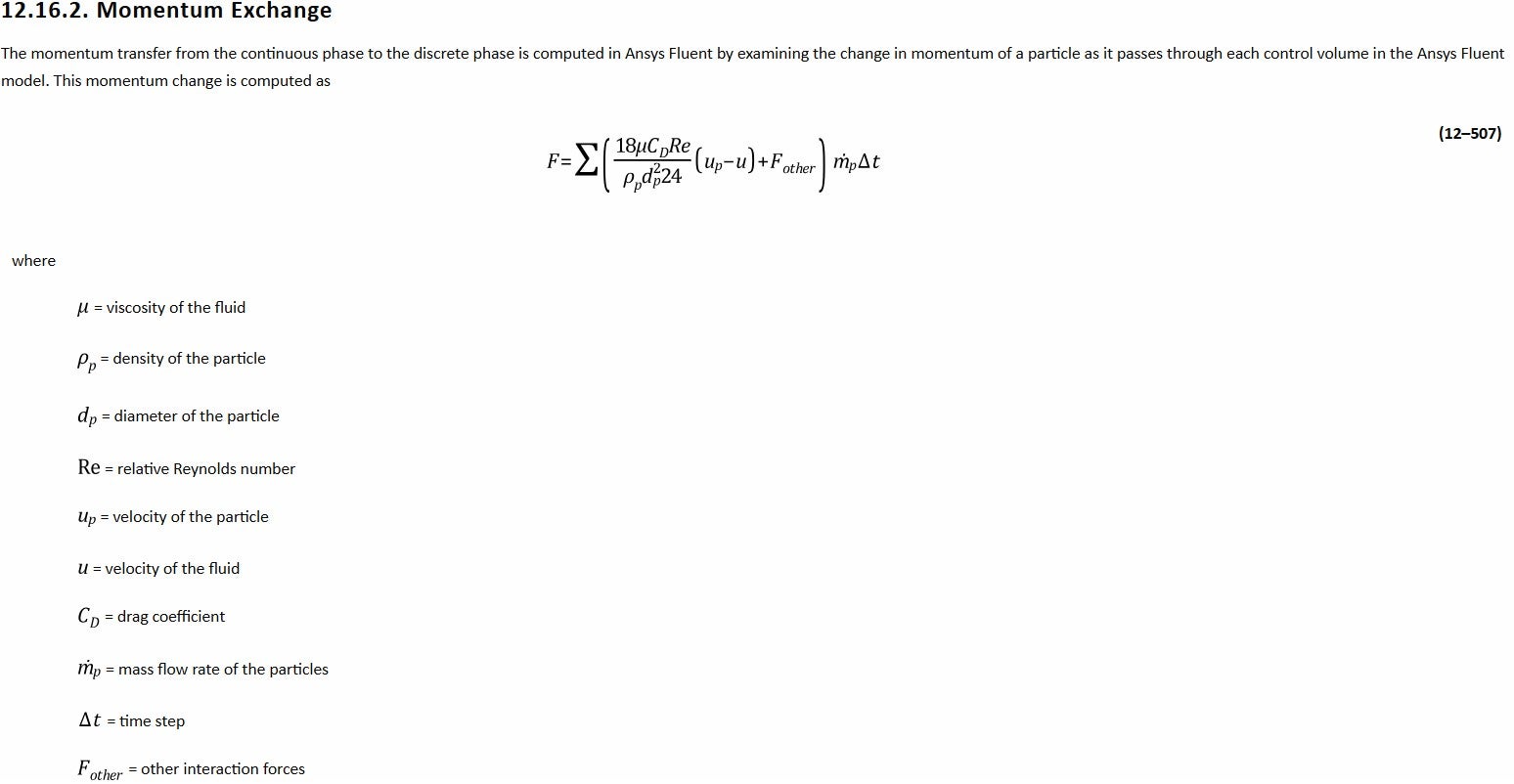-
-
April 24, 2025 at 2:40 pm
valentin.melot
SubscriberHey all.
I'm currently using Fluent's DPM to simulate the release of 10,000 water vapor bubbles into a tall cubic domain filled with water, with a hot and cold lower and upper plates, respectively. I have a few custom forces to implement. Those forces are supposed to intervene in the tracking of the bubbles, and in a momentum source term to the carrier phase. If I understood correctly, the forces added in the DEFINE_DPM_BODY_FORCE UDF only impact the trajectory calculations. Thus, I also add those forces in the momentum source of the carrier phase using the DEFINE_DPM_SOURCE UDF, by writing: S->momentum_s[i] += F[i], with F being my forces array, and i = {0, 1, 2} the cartesian component. So, F[i] is in Newton. In addition to this, I also implement a very simple heat exchange mechanism between the bubbles and the carrier phase, which is nearly identical to Fluent's Inert Heating, with the only change being how I define the heat transfer coefficient h. Since Fluent doesn't provide a way to customize it (as it does with the drag coefficient), I compute it in the DEFINE_DPM_SOURCE UDF, and use it in the usual formula: Q = pi*d*d*(T_b - T_f)*h, with h = k*Nu/d. In those, d is the bubble diameter, T_b the bubble T° (constant), T_f the fluid T° at the bubble center, k the conduction coefficient, and Nu the bubble Nusselt number. I thus write: S->energy += Q, where Q is in Watt. I don't make use of the "strength" parameter which, since I enforce 1 bubble per parcel, is equal to the inverse of my fluid timestep, which is constant at 0.01s. I of course disable Fluent's laws in the GUI, so no laws are active. Bubbles' radius is constant, as is their density. Finally, I use node-based averaging of the source terms to distribute those terms to the neighbouring cells (with a Gaussian kernel). Simulation is obv unsteady, with unsteady particle tracking etc.
Here's my problem: results weren't great, so I wanted to compare Fluent's Inert Heating law to mine. It turns out that Fluent's Nusselt number is often very close to mine (1-10% away), which would indicate that Fluent's Inert Heating and my law yield the same results. But, when I compute the volume-averaged enthalpy source during the simulation (enthalpy source = carrier phase energy source in this case), mine's magnitude is around 1e-8 to 1e-10, whereas Fluent's is around 1e-15. What am I missing here? Should I make use of the "strength" parameter, or maybe my units are not right? In the documentation's exemple of the DEFINE_DPM_SOURCE UDF, the variable put into S->energy is in Watt too.*I can provide more information on the case if needed. Thanks! -
April 25, 2025 at 9:49 am
Rob
Forum ModeratorAs staff I can't comment too specifically on UDFs and non-public functions.
You're assigning forces etc to the DPM trajectories, so each parcel will update as it moves. However, the DPM source to the cell (fluid) will be a function of all of the parcels in that cell. You're then using the node averaging so it's going to be difficult to work out which track does what to which cell.
Fluent's UDFs take and output in SI units (K, m, Pa, etc) regardless of what units you have set in Fluent. That's generally fine for most of the world, and only ever causes confusion with Celcius and in the US.
-
April 27, 2025 at 11:33 pm
valentin.melot
SubscriberI understand. Another thing: I’m sending you a screenshot of Fluent’s documentation regarding the momentum source in a two-way coupled simulation using DPM. What are meant by “other interaction forces”? Are the buoyancy (the force appearing on the particle when gravity is enabled) and virtual-mass (the one that can be checked directly in the GUI) considered as such forces? I tried putting a bubble in a quiescent fluid and only activating either the gravity or the virtual-mass (the later while giving a little kick to the particle’s y velocity), and the y-momentum source values returned were in the order of 1e-24 to 1e-27 Newtons, which is incredibly small. Those values were obtained by summing the y-momentum DPM source terms over the entire domain (so I supposed they are still Newtons). Bottom line: I have a lot of trouble concluding wether those 2 forces participate in the momentum source term. Also, there’s this line in section 24.9.6 of the User Guide, version 2024R2: “The exchange terms are reported as the rate occurring in each cell” which confuses me a little regarding the units of the reported DPM source terms.

-
-
April 30, 2025 at 2:13 pm
Rob
Forum ModeratorOther forces will be gravity, collision effects, "other" DPM models and whatever else isn't covered by drag. Most models have a "other stuff" term to account for any user coding (UDFs) or future development work.
Not sure about the result, how quickly was the particle moving?
-
- You must be logged in to reply to this topic.



-
4167
-
1487
-
1363
-
1194
-
1021

© 2025 Copyright ANSYS, Inc. All rights reserved.







